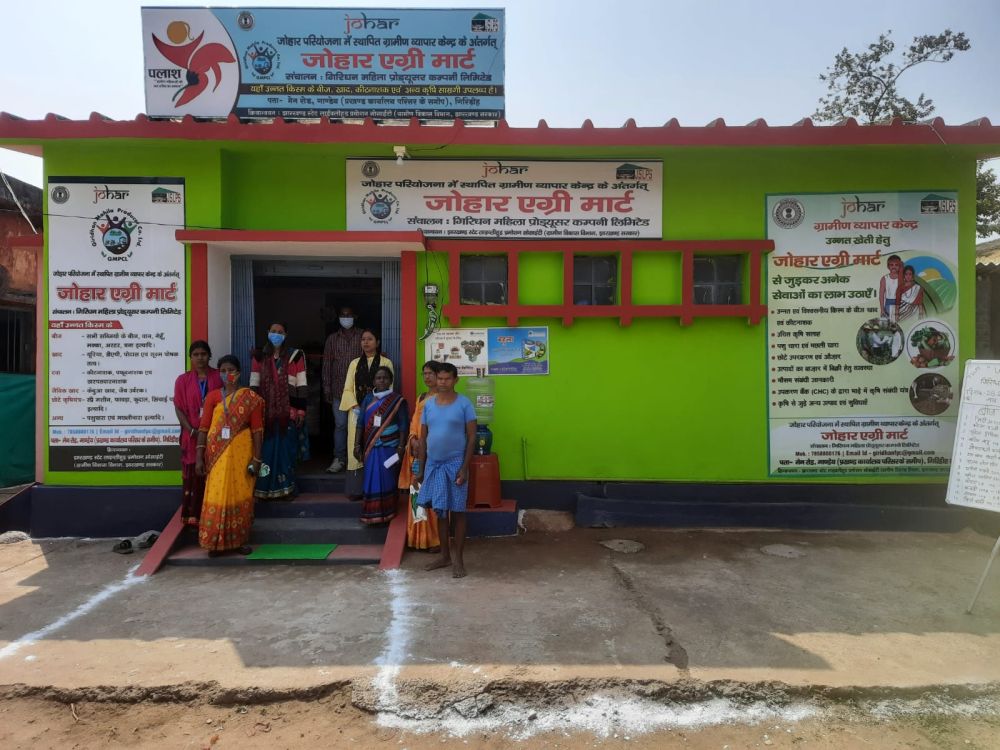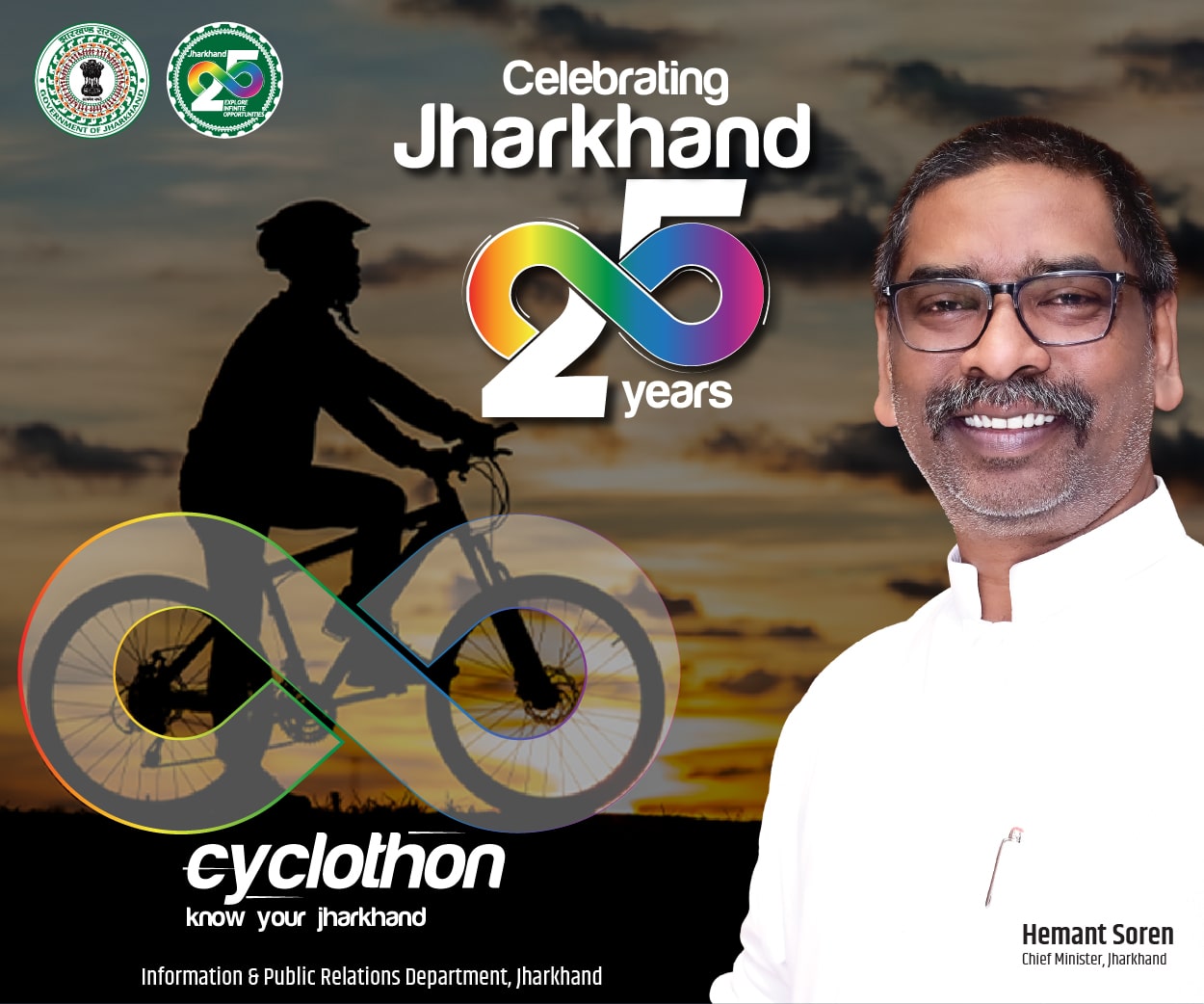




Jharkhand Opportunities for Harnessing Rural Growth (JOHAR) was an integrated livelihood project of Govt. of Jharkhand implemented with 70% credit assistance from the World Bank (International Bank for Reconstruction and Development - IBRD).
The Govt. of Jharkhand provided an additional 30% as its direct contribution to the project cost.
It is implemented by JSLPS under Rural Development Departmen under the project covering approx. 2.25 lakh rural women producer households across 68 blocks of 17 districts(except for Garhwa, Chatra, Koderma, Jamtara, Deoghar, Godda and Sahebganj).


JOHAR aimed to enhance and diversify rural household incomes in select sectors. At the project close in June, 2024, the JOHAR project had spent approx. 98% of its total budget of Rs. 833.34 Cr.
Project aimed to enhance and diversify household income of 2 lakh households in select farm and allied sectors for targeted beneficiaries through:
• 30% increase in real average annual household income of target households
• 30% increase in proportion of real income from select livelihoods sources
• 1,00,000 of project beneficiaries that are from Scheduled Caste (SC) or Scheduled Tribe (ST)
• 70,000 of project beneficiaries are female
• 2,00,000 of farmers reached with agricultural assets or services
The project worked towards achieving this development objective by:
1. Mobilising and aggregating rural producers from ST, SC, and smallholder households into Producer Groups (PG) and Farmer Producer Organisations (FPOs), with focus on diversification and/or intensification of their current production system and improving their participation higher up in the value chain.
2. Strengthening the competitive advantage of target rural producers by transfer of climate-resilient production techniques, enhanced opportunities for value addition and effective market linkages.
3. Improving access to financing, including innovative financial products, through the community institutions platform and formal financial institutions.
4. Establishing partnerships with the private sector, including rural entrepreneurs, for effective forward and backward linkages with producers.
5. Supporting skill development and financing modalities to facilitate jobs and entrepreneurship with a focus on the value chain and agribusiness.
Key Achievements:
i. A total of 3922 Producer Groups (PGs) have been formed and about 2,24,286 Households have been on-boarded under PGs (1,55,902 HH engaged in high value agriculture, 92,368 in livestock, 18,153 in fishery and about 48,401 under NTFP).
ii. Against the project IRI targets of 60%, in FY 21-22, 68% of the PGs promoted under JOHAR were graded under category A&B which subsequently improved to 85% by the FY 23-24.
iii. Total 21 FPOs are registered and functional under JOHAR. 35 Rural Business Hub and 28 Livestock Service Centers were established under these FPOs and had generated revenue of Rs. 2 crore per month. FPOs were catering to about 75% of PGs formed and had raised Rs. 14 Cr as share capital covering 68% of the total members. These 20 FPOs (at least one year old) were running successfully and haddone a cumulative business of around Rs. 205 Cr. since inception till June, 2024. As per the World Bank’s assessment 90% of these FPOs were viable. Further, 13 FPOs were credit linked with banks fora total Cash Credit facility of Rs. 3.5 cr for their working capital requirements and using internet banking and digital payments options for their financial transactions.
iv. Custom Hiring Centres (CHCs) were operational in 39 Blocks in Radio-Taxi/Library Model. A total of 14,000 orders were served generating Rs. 1.4 Cr business.
v. JOHAR project also aimed to increase irrigation acreage by providing 1180 Solar Lift Irrigation (LI)schemes of which 1131 schemes were completedirrigating 6648 hectares of land. Along with LI schemes JOHAR has innovated a solar moveable scheme of one HP for providing irrigation to small plots in and around the irrigation sources. About 1309 such solar moveable 1 HP schemes were distributed among the producer groups providing irrigation to about 2618 hectares of land. To sustain these LI schemes Water User Groups (WUG) wereformed through which about Rs. 48 lakh wascollected.
vi. Project had also established about 554 Poly House Nursery to promote soil less seedlings under HVA intervention and supplied about 2.5 Cr soilless seedlings to farmers. The project had created a strong pool of community cadres by training and engaging about 16775 community cadres.
vii. To promote fishery among rural HHs, under JOHAR 17 Reservoir Pen culture (RPC) were established. Total 8729 water bodies are covered under fisheries intervention. Project had piloted layer farming with 300 HHs producing 70,000 eggs per day in Basia, Gumla. 158 more such HH were engaged in layer farming in Chas block of Bokaro district thus increasing the production capacity to 1,00,000 eggs per day. JOHAR had also developed commercial broiler farming with capacity of 2.5 lakh birds per cycle.
viii. Under NTFP, the project had covered about 48401 HHs in 51 blocks generating Rs. 15 crore business through Lac cultivation. About 2632 acre of fallow up land has been brought under farming through lemon grass intervention with 16,000 HHs generating a total of Rs. 10.40 cr business.
ix. JOHAR had successfully piloted mango branding, Tamarind value added product and introduced new farm machines like Rice Trans Planters with the members.


|
Jharkhand Opportunities for Harnessing Rural Growth Project |
|||
|
Physical Progress on Key Performance Indicators since inception till June, 2024 |
|||
|
Sl.no |
Activities |
Project Target |
Cumulative Achievement till June, 2024 |
|
A. Community Institution Development |
|
|
|
|
1 |
No. of District Entered |
17 |
17 |
|
2 |
No. of Block Entered |
68 |
68 |
|
3 |
No of Village covered |
3500 |
3876 |
|
4 |
No of PG formed |
3500 |
3922 |
|
5 |
No Of HH covered under PG |
200000 |
224286 |
|
6 |
No of SC/ST HH covered |
120000 |
143543 |
|
7 |
No of PG saving accounts opened |
3500 |
3876 |
|
8 |
No. of PG received PG start-up grant |
3500 |
3876 |
|
B. High Value Agriculture |
|
|
|
|
9 |
No of HH/Farmer covered under HVA |
150000 |
155902 |
|
10 |
Establishment of Poly House Nursery(PNH) * |
1000 |
554 |
|
C. Livestock |
|
|
|
|
11 |
No of HH covered under Livestock primary(Goatry,Piggery) |
27013 |
26022 |
|
12 |
No of HH covered under Livestock BYP |
60000 |
65377 |
|
13 |
No of HH covered under layer ** |
600 |
458 |
|
14 |
No of HH covered under broiler |
500 |
500 |
|
D. Fishery |
|
|
|
|
15 |
No of HH covered under Fishery |
17000 |
18153 |
|
16 |
No of HH received input Grant for fishery |
17000 |
16066 |
|
E. Non-Timber Forest Product-NTFP |
|
|
|
|
17 |
No of HH covered under NTFP(Lac, Lemon grass, Moringa, Tamarind etc) |
48900 |
48401 |
|
F. Irrigation |
|
|
|
|
18 |
No of DPR prepared |
1310 |
1310 |
|
19 |
No of Irrigation Scheme installed |
1180* |
1131 |
|
20 |
No of PG received Grant for Irrigation Scheme |
1180 |
1134 |
|
21 |
No of PG received grant for .5/1 HP moveable solar pump |
1400 |
1309 |
|
G. Agri-Business & Marketing |
|
|
|
|
22 |
No. of FPOs formed and made functional with systems in place |
20 |
21 |
|
23 |
Total value of Input/ output business done by the FPC (in Rs. Lakhs) |
10000 |
20500 |
|
24 |
Total Share capital mobilized in FPOs. (In lakhs) |
1000 |
1400 |
* Remaining target got cancelled in subsequent discussions with the World Bank(WB).